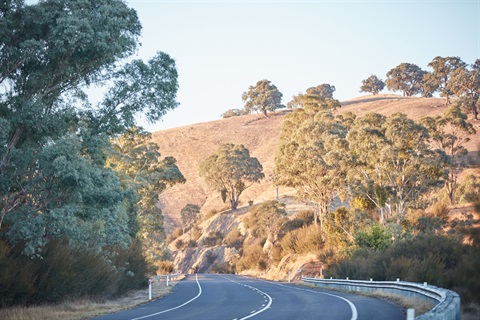A Grains Research and Development Corporation (GRDC) investment has released outcomes on the most profitable and least risky cropping rotations for grain growers in southern New South Wales.
Since 2017, GRDC and industry partners have invested $9.5 million in the project which is being led by CSIRO, Australia’s national science agency, in partnership with the NSW Department of Primary Industries (DPI), growers and agronomists.
CSIRO Chief Research Scientist Dr John Kirkegaard, says outcomes from the past six years of research could assist growers to maximise profitability from available rainfall while managing risk.
“Since 2017, these scientific teams have been monitoring four experimental sites in NSW; a core site at Wagga Wagga and sites at Greenethorpe, Condobolin, and Urana. They have collaborated with growers and advisers to understand how rainfall can be most efficiently converted into profit across entire farming systems,” says Dr Kirkegaard.
“Our investigation delved into diversifying canola-cereal systems with different legume options, conservative and optimistic yield-based nitrogen fertiliser strategies, and earlier versus timely sowing with and without crop grazing.”
At all sites, during the first three-year phase (2017-2020) some farming systems were $200-$300 per hectare more profitable, were less risky, had stable or declining weed and disease burdens, had lower average input costs, and consistently performed well over a range of different growing seasons compared to the baseline canola-cereal farming systems.
During the wetter year (2020, 2021, 2022), systems with more canola tended to increase in profit and those with legumes declined, but there were diverse systems with legumes that were as profitable or more profitable as the canola-cereal systems at two of the four sites.
For mixed (grazing crop) systems, the most profitable alternatives were early sown grazed crops (wheat/canola) with a higher nitrogen fertiliser strategy (decile 7) or in sequence with a legume (vetch), and for crop-only systems, timely sown, diverse sequences with legumes and a more conservative (decile 2) nitrogen strategy were the most profitable.
Recently appointed GRDC sustainable cropping systems manager – north, Dr Mark Callow, says that the ability to compare long-term contrasting systems, made up of different treatments, across different regions with common measurements is a powerful tool to assist growers make informed decisions to increase productivity, profitability and mitigate risk.
“This research was prompted by growers and advisers seeking comparisons between traditional farming systems, namely barley/canola/wheat rotations, and alternative diverse systems that incorporate legumes with canola and wheat,” Dr Callow says.
“The full findings of the study are expected to provide detailed insights into the legacy of soil, water and nitrogen following different crop sequences, nitrogen strategies and sowing times.”
The research has received strong support from advisers across southern New South Wales, who are using the outcomes to inform decisions when consulting with growers.
“The value of this to the industry in terms of increased productivity and profitability is significant,” says Delta Agribusiness Consultant, Tim Condon.
“The diversity of farming systems used across this area is important to grower profitability. The farming systems project is investigating the key agronomic and economic drivers of a range of cropping rotations to deliver positive actionable outcomes to grain growers across this region.”
Director of Lott Rural Consulting, Peter Lott, says long-term research was needed to further improve Australian grain production.
“Systems research takes many years and patience for the full effect of the treatments to emerge over time. It also allows for the effect of variable seasons on measurements to be captured. This is how low risk, productive, economic and sustainable farming systems evolve,” he says.
Dr Callow says that one of the main benefits of farming systems research was the ability to investigate entire crop sequences alongside a range of agronomic management strategies over time to influence whole farm profitability, efficiency and sustainability.
The success of the southern NSW farming systems project has also been a catalyst for GRDC instigating similar projects in Western Australia and the cropping regions in South Australia, Victoria and Tasmania.
The full article summarising the research can be found on the Groundcover website.
This release was originally published by Grains Research and Development Corporation.








